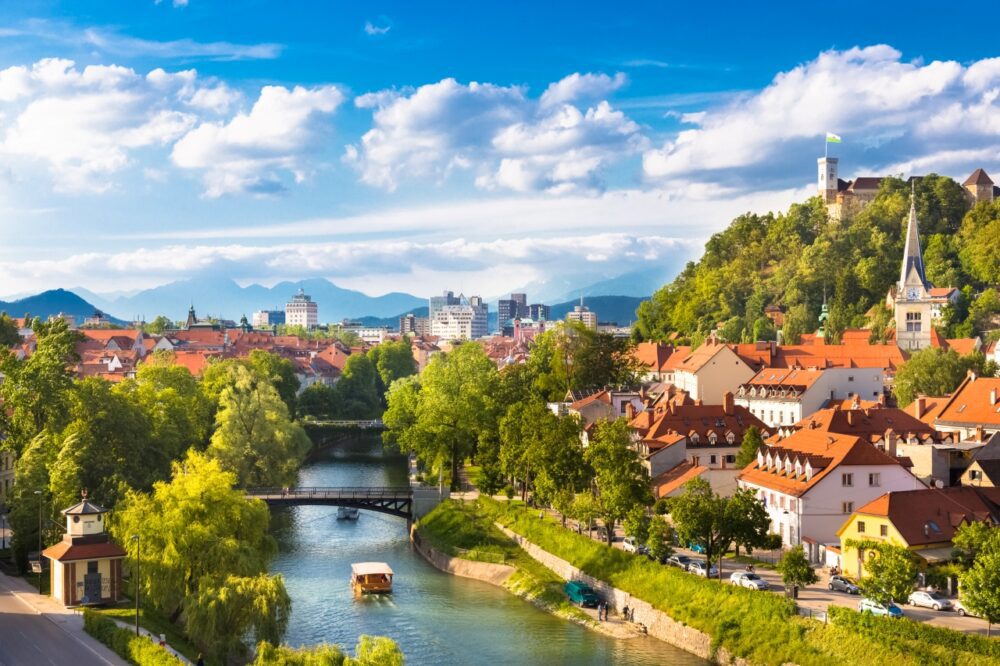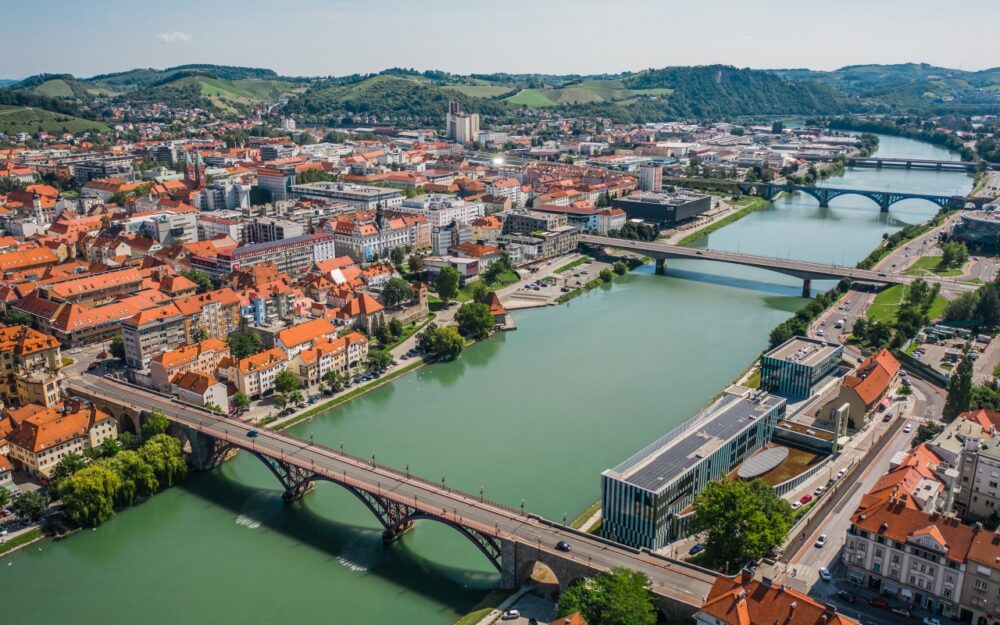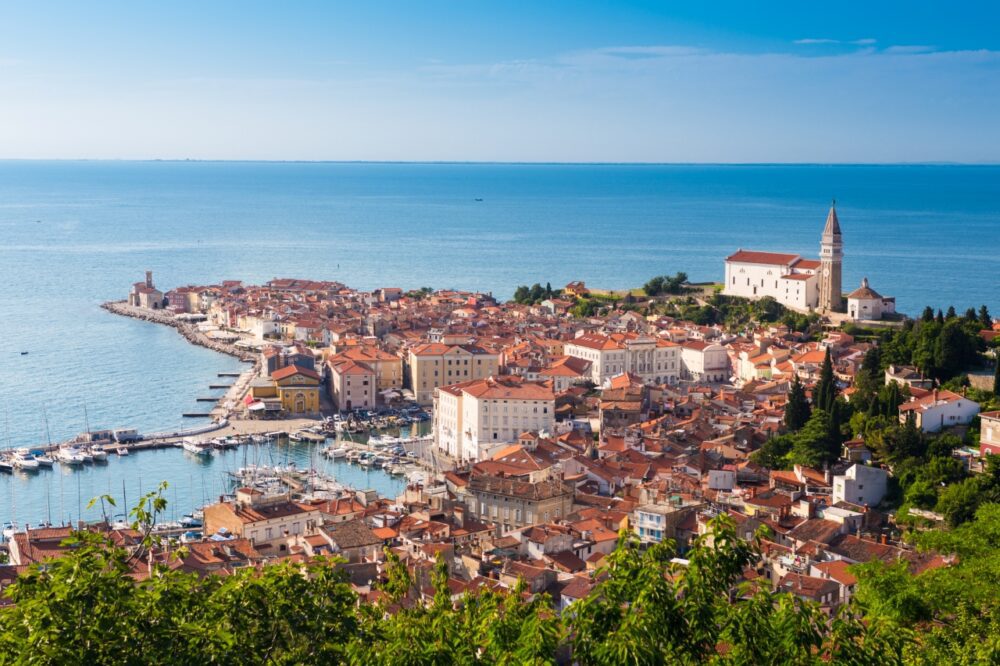
Introduction
Nestled between Italy, Austria, and Croatia, Slovenia is a hidden gem of Central Europe that offers an incredible mix of natural beauty, rich history, and vibrant culture. Though small, Slovenia packs a punch with its alpine landscapes, charming coastal towns, and picturesque cities. Whether you’re hiking in the Julian Alps, kayaking on Lake Bled, or strolling through the old town of Ljubljana, Slovenia offers an unforgettable travel experience for all kinds of travellers.
My first trip to Slovenia felt like uncovering one of Europe’s best-kept secrets. I was drawn by the images of fairy-tale castles, lush green valleys, and the promise of outdoor adventures. What I found was so much more—a country with a laid-back charm, welcoming locals, and a rich history that often gets overlooked. Slovenia might be small, but it has a lot to offer, making it an ideal destination for anyone looking to explore off the beaten path. Here’s why Slovenia should be on your travel radar.
Table of Contents
Reasons You Should Visit Slovenia
1. Stunning Natural Scenery
Slovenia is a paradise for nature lovers, offering some of the most breathtaking landscapes in Europe. The country’s crown jewel is Lake Bled, with its crystal-clear waters and the iconic church sitting on a tiny island in the middle. I spent a serene afternoon rowing out to the island, ringing the church bell for good luck, and soaking in the peaceful surroundings. A hike up to Bled Castle offers even more stunning views of the lake and the surrounding mountains.
For more adventure, head to Triglav National Park in the Julian Alps. The park is home to the highest peak in Slovenia, Mount Triglav, and offers endless opportunities for hiking, climbing, and skiing. I hiked through the Vintgar Gorge, where wooden walkways take you alongside turquoise waters and dramatic cliffs—it’s one of the most scenic hikes I’ve ever done.
2. Rich History and Culture
Slovenia might be small, but it’s bursting with history and culture. From Roman ruins to medieval castles, the country’s past is visible at every turn. In Ljubljana, I loved wandering through the charming old town, crossing the famous Triple Bridge, and exploring the lively market square. The Ljubljana Castle, perched high above the city, offers panoramic views and a great insight into the region’s medieval history.
The town of Ptuj is one of the oldest in Slovenia, with its roots dating back to Roman times. I spent a day exploring its ancient streets and visiting Ptuj Castle, where the museum’s exhibits brought the town’s fascinating past to life. Slovenia’s mix of old-world charm and modern culture makes it an endlessly interesting place to explore.
3. Outdoor Adventure Playground
If you’re an outdoor enthusiast, Slovenia is your dream destination. The country’s diverse landscapes make it perfect for hiking, cycling, and water sports. I loved exploring Lake Bohinj, a less touristy alternative to Lake Bled, where you can swim, kayak, or simply relax by the water surrounded by towering mountains. In the nearby Soca Valley, the emerald-green Soca River is famous for its white-water rafting and canyoning opportunities, and it’s one of the most beautiful rivers I’ve ever seen.
In winter, Slovenia transforms into a snow-covered wonderland. I visited Kranjska Gora, one of the country’s top ski resorts, where you can hit the slopes by day and enjoy cosy mountain chalets by night. Whether you’re seeking high-adrenaline adventures or peaceful retreats in nature, Slovenia has it all.
4. Charming Towns and Villages
Slovenia’s cities and towns are like something out of a storybook, with their medieval architecture, cobblestone streets, and colourful buildings. Skofja Loka is one of the country’s most beautiful small towns, with its well-preserved medieval centre and stunning views of the surrounding hills. I wandered through its narrow streets, visited Skofja Loka Castle, and enjoyed the quiet, relaxed atmosphere.
On the coast, Piran is a hidden gem. This small seaside town on the Adriatic feels like a slice of Italy, with its Venetian-style architecture, narrow alleyways, and a lovely seafront promenade. I climbed to the top of the Church of St. George for incredible views over the town’s red rooftops and the sparkling Adriatic Sea.
5. Affordable and Accessible
Despite its growing popularity, Slovenia remains one of the most affordable travel destinations in Europe. Whether you’re enjoying a meal in a local restaurant, staying in a charming guesthouse, or exploring the national parks, you’ll find that your money goes further here than in many neighbouring countries. I was pleasantly surprised by how budget-friendly Slovenia is, especially when it came to accommodation and food.
Slovenia is also incredibly easy to navigate. The country’s compact size means that you can get from one end to the other in just a few hours, making it perfect for a road trip. Public transportation is efficient and affordable, and I found that buses and trains connected even the most remote towns and villages. Slovenia’s accessibility makes it a great destination for both short trips and extended adventures.
Best Places to Visit in Slovenia
1. Ljubljana

Slovenia’s capital, Ljubljana, is one of Europe’s greenest and most charming cities. The heart of the city is its pedestrianised old town, where you can stroll along the Ljubljanica River, cross the famous Dragon Bridge, and enjoy the vibrant café culture. One of my favourite spots was Prešeren Square, where you can admire the pink Franciscan Church and watch the world go by.
Ljubljana Castle is another must-see, offering fantastic views over the city and a fascinating look into Slovenia’s history. For a taste of local life, I recommend visiting the Central Market, where you can pick up fresh produce, local cheeses, and homemade goods. Ljubljana is small but full of character, making it a perfect base for exploring the rest of the country.
2. Maribor

Maribor is Slovenia’s second-largest city and a hidden gem in the country’s wine region. The city is home to the Old Vine House, which boasts the world’s oldest grapevine, and I loved sampling the local wines in the charming streets of Lent, the riverside district. Maribor’s vibrant squares, like Main Square and Slomšek Square, are filled with history and are perfect for a leisurely afternoon walk.
If you’re visiting in winter, the nearby Pohorje Mountains offer fantastic skiing and snowboarding. In the warmer months, the area is great for hiking and cycling. Maribor combines history, culture, and outdoor adventure, making it an ideal destination for a weekend getaway.
3. Kranj

Just a short drive from Ljubljana, Kranj is a small but charming town with a picturesque old town set against the backdrop of the Julian Alps. The town is known for its medieval architecture, particularly Kieselstein Castle and the 16th-century Church of St. Cantianus. I enjoyed wandering through Kranj’s cobbled streets and discovering its hidden corners.
Kranj is also a gateway to outdoor adventures, with the Sava River offering kayaking and fishing opportunities. If you’re visiting in winter, Kranj is close to some of the best ski resorts in the region. For a peaceful escape from the busier tourist spots, Kranj is a great place to slow down and enjoy a more authentic side of Slovenia.
4. Celje
Celje is one of Slovenia’s oldest cities, with a rich history that dates back to Roman times. The city is dominated by Celje Castle, a medieval fortress that offers panoramic views over the town and surrounding countryside. I spent a few hours exploring the castle and learning about its fascinating history, which includes tales of knights, kings, and intrigue.
Celje’s old town is also worth a visit, with its mix of Gothic and Renaissance architecture. The Celje Regional Museum offers great insights into the area’s history, from Roman ruins to medieval artefacts. For a quieter, off-the-beaten-path destination with plenty of history, Celje is a fantastic option.
5. Koper
Located on Slovenia’s small stretch of Adriatic coastline, Koper is a lively port town with a rich Venetian history. The city’s old town is full of narrow, winding streets, with the impressive Tito Square at its heart. Climbing the bell tower of the Cathedral of the Assumption gave me beautiful views over the town and the sea beyond.
Koper is also a great base for exploring Slovenia’s coast. Nearby beaches like Žusterna offer a relaxing escape, while the nearby town of Izola has a more laid-back, fishing village vibe. If you’re looking for a coastal destination that’s less touristy than Piran but equally charming, Koper is the perfect spot.
6. Piran

Piran is perhaps Slovenia’s most picturesque coastal town, with its Venetian-style architecture and stunning location on the Adriatic Sea. The old town is a maze of narrow streets and alleys, leading to the beautiful Tartini Square, named after the famous violinist who was born here. I loved climbing to the top of St. George’s Church for a panoramic view of the town’s red rooftops and the sparkling sea beyond.
Piran is also a great place to enjoy fresh seafood. I spent an afternoon dining on local specialities like squid and mussels at one of the many seaside restaurants. If you’re looking for a relaxing coastal getaway with a touch of history, Piran is the perfect choice.
7. Novo Mesto
Tucked away in the Dolenjska region, Novo Mesto is a quiet town with a rich history and stunning surroundings. The town sits on the Krka River, and a walk along the riverbank offers beautiful views of the old town’s red rooftops and medieval churches. One of the highlights of my visit was the Franciscan Monastery, which dates back to the 15th century.
Novo Mesto is also the heart of Slovenia’s wine region, and I highly recommend visiting one of the local wineries to sample Cviček, a light, refreshing red wine that’s unique to the region. Novo Mesto’s relaxed pace and beautiful setting make it a great destination for a slower, more laid-back trip.
8. Ptuj
Ptuj is the oldest town in Slovenia, and it’s bursting with history. The town’s main attraction is Ptuj Castle, which overlooks the city and houses a fascinating museum with exhibits ranging from medieval armour to traditional Slovenian costumes. I spent hours wandering through the castle’s halls, admiring its art and learning about the town’s long and storied past.
Ptuj is also known for its annual Kurentovanje festival, a lively carnival where locals dress up in traditional costumes to ward off winter. Even outside of festival season, the town’s medieval streets, Roman ruins, and relaxing thermal baths make it a fantastic destination for history lovers.
9. Skofja Loka
Skofja Loka is one of the most well-preserved medieval towns in Slovenia, and it feels like stepping into a fairytale. The town is dominated by Skofja Loka Castle, which offers stunning views over the town and the surrounding hills. I loved wandering through the town’s narrow streets, visiting the local craft shops, and enjoying the peaceful, timeless atmosphere.
Skofja Loka is also a great base for exploring the nearby Poljanska Dolina and Selška Dolina valleys, where you can hike, cycle, or simply enjoy the natural beauty of the region. For a quiet, charming escape with plenty of history and natural beauty, Skofja Loka is a must-visit.
10. Lake Bled
No trip to Slovenia would be complete without a visit to Lake Bled, one of the most iconic destinations in the country. The lake’s emerald waters, surrounded by mountains and forests, are absolutely stunning. I rented a traditional pletna boat to row out to Bled Island, where I climbed the steps to the Church of the Assumption and rang the wishing bell.
For the best views of the lake, I hiked up to Bled Castle, which sits perched on a cliff above the water. From here, you can see the entire lake, the island, and the distant Julian Alps. After a day of exploring, I treated myself to a slice of Bled cream cake, a local speciality that’s as delicious as the scenery is beautiful. Bled is one of those places that you’ll never forget.
Travel Tips for Slovenia
Getting Around Slovenia
Slovenia is small and easy to navigate, with buses and trains connecting major cities like Ljubljana, Maribor, and Koper. Buses are the most reliable way to reach smaller towns and rural areas, especially around Lake Bled and Triglav National Park. Trains are slower but scenic, particularly on routes through the Julian Alps. Renting a car is ideal for exploring the countryside at your own pace, especially if you want to venture off the beaten path. Roads are well-maintained, but parking can be tricky in tourist hotspots like Lake Bled.
Best Time to Visit Slovenia
The best time to visit Slovenia is in spring (April to June) and autumn (September to October), when the weather is mild and the landscapes are stunning with blooming flowers or autumn colours. These seasons are perfect for hiking, sightseeing, and avoiding the summer crowds. Summer (July to August) is great for enjoying Slovenia’s lakes and rivers, but it can get busy, especially at Lake Bled and the Adriatic coast. Winter (December to February) offers skiing in the Julian Alps, with popular resorts like Kranjska Gora.
Passport and Visa Requirements for Slovenia
Slovenia is part of the Schengen Area, so visitors from EU/EEA countries can enter with just an ID card. Travellers from countries like the US, UK, Canada, and Australia can stay visa-free for up to 90 days within the Schengen Zone. Make sure your passport is valid for at least three months beyond your departure date. If you’re visiting nearby countries like Italy or Austria, border crossings are easy and seamless.
Currency and Banks in Slovenia
Slovenia uses the Euro (EUR), and ATMs are widely available in cities and tourist areas. Credit and debit cards are commonly accepted, even in smaller towns, but it’s always good to carry some cash for markets or rural areas where card payments might not be possible. Currency exchange offices offer fair rates, but ATMs are generally the best way to get cash. Tipping is appreciated but not expected—leaving 5-10% in restaurants is a nice gesture for good service.
Language and Useful Phrases to Know
The official language is Slovene, but English is widely spoken, particularly in cities and tourist regions like Ljubljana and Lake Bled. That said, learning a few Slovene phrases can make your trip more enjoyable. Try “Dober dan” (good day), “Hvala” (thank you), and “Prosim” (please). In more rural areas, English might be less common, so having a translation app or knowing basic phrases will be helpful.
Budgeting and Costs for Slovenia
Slovenia is more affordable than its Western European neighbours but slightly pricier than the Balkans. Accommodation, especially in popular areas like Lake Bled or Piran, can be expensive in summer, so booking in advance is wise. Eating at local restaurants or guesthouses offers good value, and public transport is reasonably priced. Many of Slovenia’s outdoor attractions, like hiking trails and national parks, are free to explore, making it easy to travel on a budget while enjoying the country’s stunning natural beauty.
Conclusion
Slovenia is a small country with a big heart. Whether you’re drawn by its stunning natural landscapes, rich history, or charming towns, you’ll find that Slovenia offers something for every type of traveller. From the vibrant streets of Ljubljana to the peaceful shores of Lake Bled, Slovenia is a destination that combines the best of Central Europe in one easily accessible and affordable package.
What I love most about Slovenia is the sense of discovery that comes with every turn. You can spend your morning hiking in the mountains, your afternoon exploring a medieval castle, and your evening enjoying a glass of local wine by the sea. Slovenia may not be the first country that comes to mind when planning a European holiday, but once you’ve experienced its beauty and charm, you’ll wonder why it took you so long to visit.
